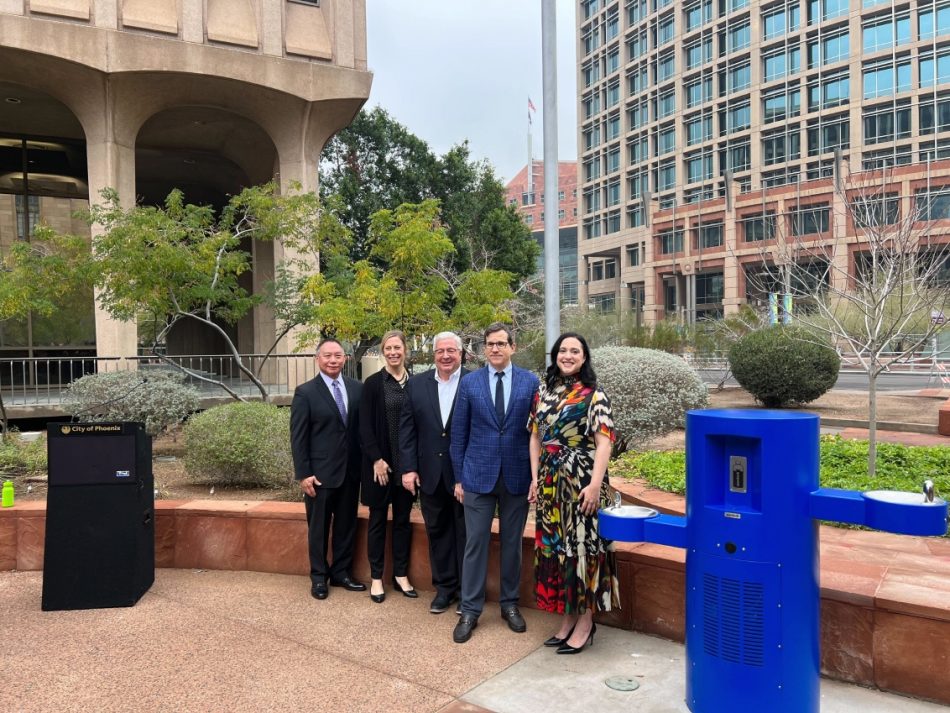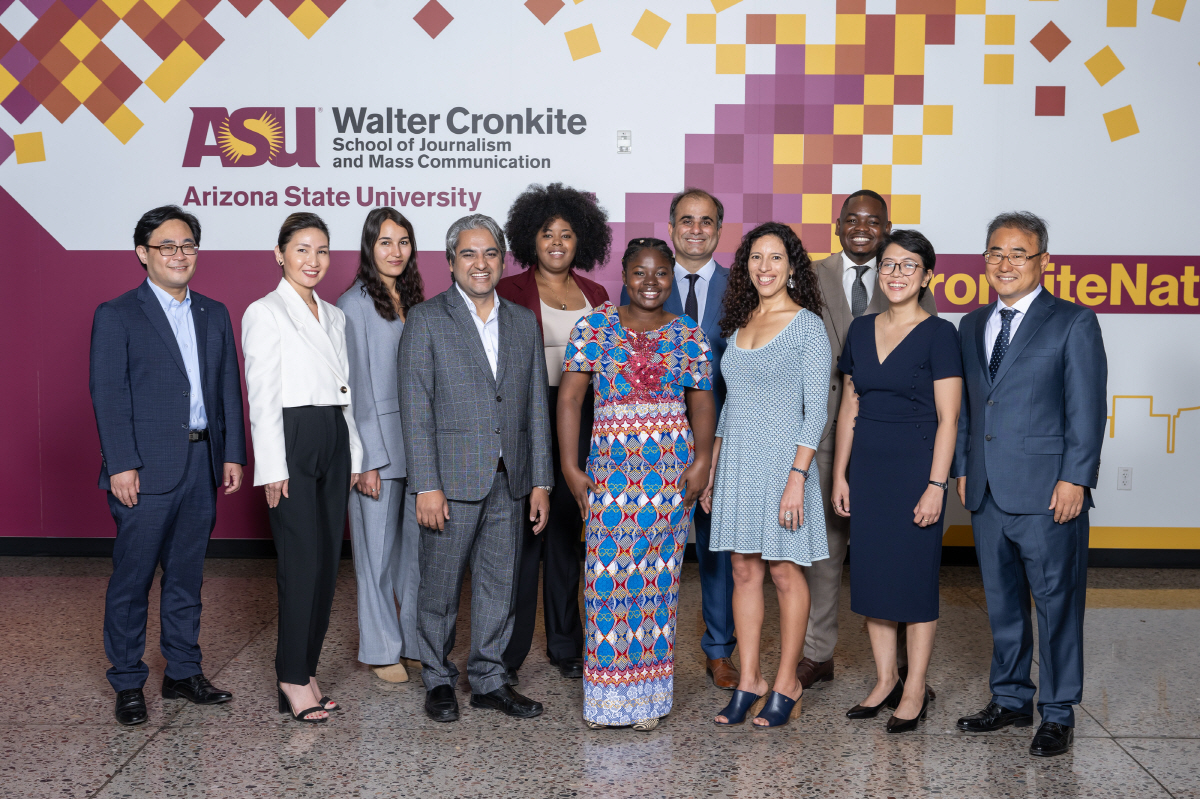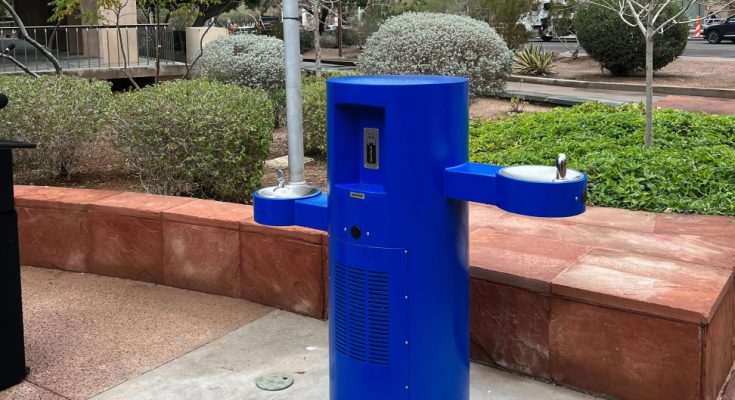In a bid to address the pressing need for accessible drinking water in the scorching heat of Phoenix, the City’s Office of Innovation, led by Chief Innovation Officer Michael Hammett, has started an initiative to install chilled water infrastructure in public spaces. In a recent interview, Hammett shared insights into the genesis, design, and expected impact of this innovative project.
Addressing the Thirst: A Six-Month Journey
Phoenix,
known for being one of the hottest major cities in the
nation, posed a unique challenge: ensuring residents and
visitors have access to chilled drinking water in public
areas. Michael Hammett outlined the motivation behind the
initiative, citing the City’s multimodal
transportation goals and the necessity for residents to stay
hydrated and healthy. Over the last six months, the Office
of Innovation has conducted surveys in pilot areas, seeking
community input to shape the project.
Hammett
emphasized, “The goal is to have equitable access to
water for everybody. We looked at other cities globally and
locally, recognizing the varying approaches to this issue.
We utilized both qualitative and quantitative data,
factoring in temperature data and community surveys to
pinpoint areas where the need is most acute.”

Innovative Design Driven by Data
The Office of Innovation takes a data-centric approach to
design and implementation. Environmental Programs and
Innovation Specialist of the City Danielle Vermeer, involved
in modifying the systems for installation, discussed the
intricacies of incorporating a chilled component. She
highlighted the limited chilled drinking water
infrastructure options, especially in high-temperature
regions like Phoenix. The team collaborated with existing
City vendors to modify designs, incorporating features such
as an internal chiller, a purge system, a bottle filler
option, and aesthetically pleasing
“bubblers.”
Danielle stated,
“We’re testing different components, from
surface coatings for heat mitigation to shade structures and
even incorporating community art for placemaking. The design
is not just about functionality; it’s about creating
an inviting and sustainable solution.”
Ensuring Safety and Quality
With
health and safety being paramount, the team collaborates
with various departments, including the Water Service
Department and Downtown Phoenix, Inc. partners. Hammett
explained that the water used is municipal water, already
tested, and on City property. The purge system supports
water quality by preventing stagnation, and experts, along
with a green and clean team, will oversee cleaning protocols
to maintain an inviting perception.
Hammett added,
“We want to ensure they are clean and that people feel
good about utilizing them.”
Exploring Technologies for Accessibility
To make chilled water more accessible and convenient, the
team explored a range of technologies. Consulting with
experts, they considered surface coatings, chiller
locations, and protective measures to withstand extreme
temperatures. The goal is not only to provide chilled water
but to ensure the system’s sustainability in
Phoenix’s heat.
Hammett expressed excitement,
“We’re testing in Phoenix, Arizona, because of
our heat. We’re looking at everything to test and
refine for the next iteration.”
Community Engagement: A Vital Component
Engaging with the community is at the core of this
initiative. Hammett highlighted the significance of placing
the community at the center of the design process. Surveys
were conducted among residents and businesses to gather
insights on preferred locations and design elements. Ongoing
evaluations post-installation will continue to involve the
community in refining and adapting the systems.
Hammett
emphasized, “It’s about putting the community at
the center of whatever we’re designing. We’ll
continue to evaluate with the community to see how
they’re performing, to see what changes the community
would like to see. It will be ongoing.”
Measuring Success and Future Impact
Evaluation mechanisms are being implemented to measure the
success and impact of the chilled water initiative. Surveys,
behavioral observations, and tracking usage will provide
insights into how the community interacts with the systems.
The initiative aims not only to quench thirst but to reduce
single-use plastic bottle consumption, contributing to
sustainability goals.
Hammett concluded,
“We’re really interested to see how people are
using it, how often they’re using it, and how it makes
them feel. We want qualitative data for what residents think
about it, do they feel better? Do they feel like
they’re able to hydrate better while navigating the
City?”

Innovative Features: Beyond the Basics
Danielle summarized the innovative features of the chilled
water solutions, including the purge feature, plastic push
buttons for user comfort, and an internal chiller. Exploring
coatings and shades for temperature control, the team is
committed to a multi-faceted approach that goes beyond
functionality. Hammett highlighted the significance of
design, colors, and community feedback in creating an
inviting and effective system.
As Phoenix continues to
evolve as a hub of innovation, the chilled water initiative
stands as a testament to the City’s commitment to
creating sustainable, accessible, and community-centric
solutions. It not only quenches physical thirst but
represents a thirst for innovation, setting a precedent for
cities worldwide.




